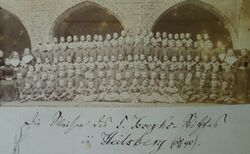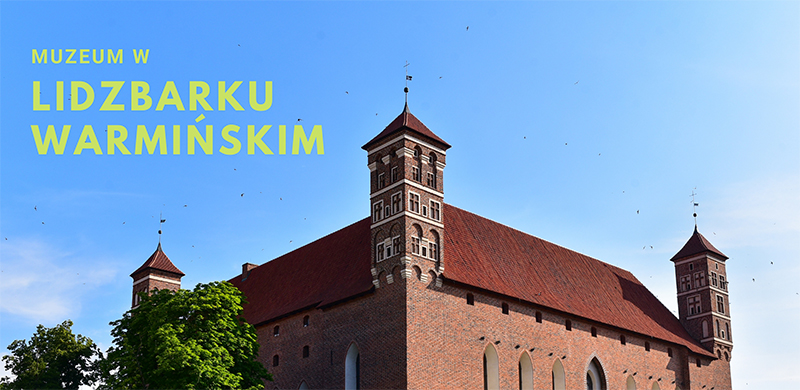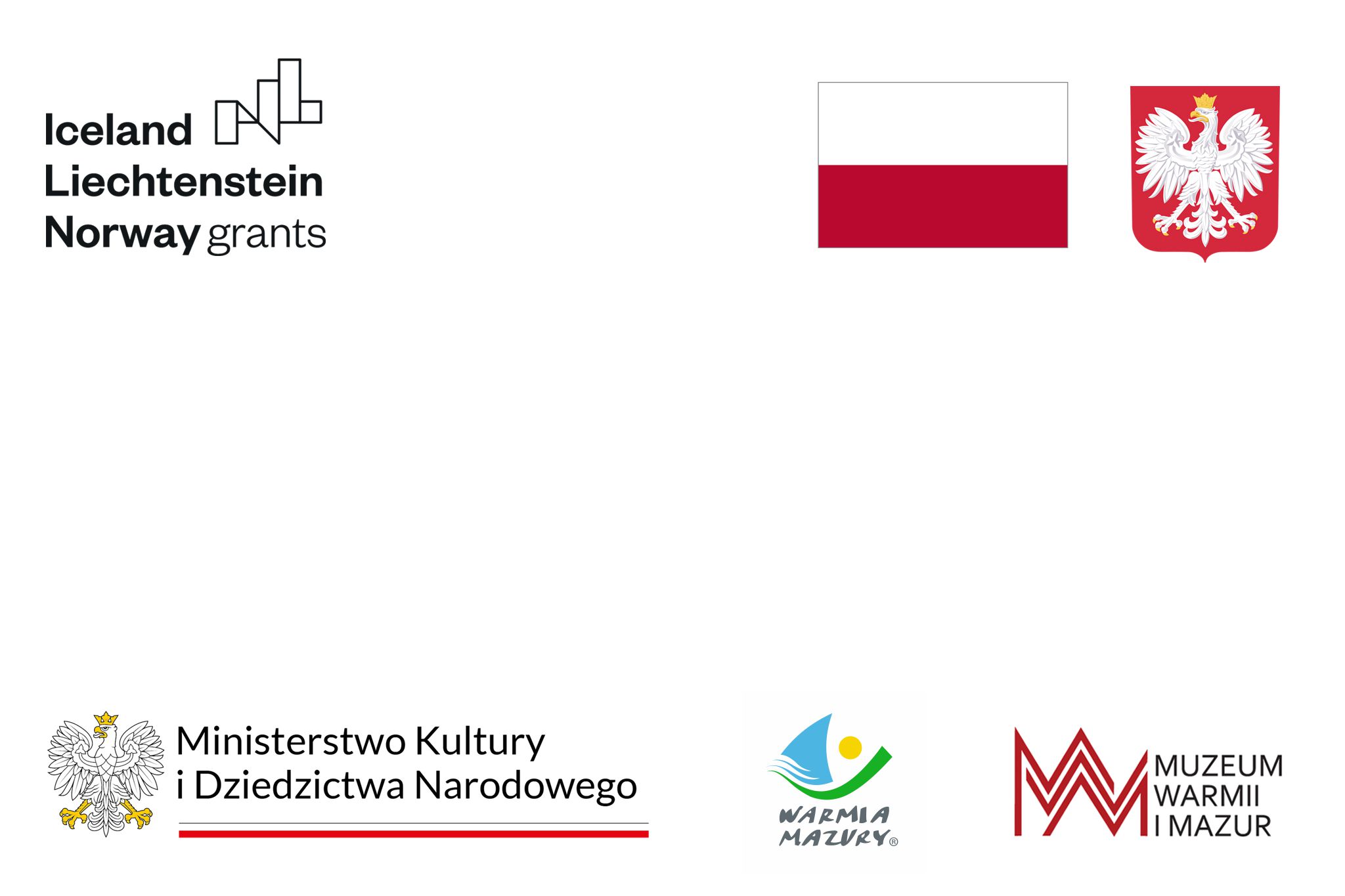Let us return to the hero of the lecture of November 15, Edward Jester. Mr. Andrzej Rzempołuch, an expert on his activities, found in the collections of the Library of the WSD Hosianum in Olsztyn an amazing photograph depicting children from the Institute of St. Joseph, immortalized in the courtyard of the Lidzbark castle.
Let us recall that the Institute of St. Joseph was established in 1859, thanks to the initiative and resources of Bishop Josef Geritz, concerned about the large increase in the number of orphans in his diocese, caused by the plagues sweeping through Warmia. Originally, orphans were to be taken care of by monasteries in Święta Lipka or Stoczek Warmiński. Bishop Geritz decided, however, that such a house could be built in the Lidzbark castle, an object requiring development, after it was forever abandoned by the bishops. The Ordinary submitted his project to the Prussian authorities, indicating that the children could be taken care of by the Vincentian Sisters experienced in this kind of activity. Therefore, work was undertaken on the adaptation of the castle under the supervision of construction counselor Edward Jester, who, having made adaptation changes, tried to make the least possible interference with the monument. Conservative treatment of "monuments of history" was not yet obvious in those days.
On December 15, 1859, thirteen residents were admitted. The boys appeared in the castle only two years later. In order to receive basic goods and be able to start elementary education, the children helped in the garden and on the farm. In the first nine years of the Department's operation, 21 patients died. Geritz therefore proposed to create a hospital in the castle in the western part of the southern wing. The turn of 1867/1868 was extremely tragic, when two Vincentian sisters and several dozen children died as a result of a typhus epidemic. The tragedy shook Father Dominic Wobbe, who resigned from the post of archpriest of Lidzbark and joined the Lazarist congregation. He himself handed over the legate that the percentage sums obtained would be used to pay for the stay in the castle for two orphans.
Guitz's successor, Bishop Philipp Krementz, had problems with the Prussian administration. The officials wanted to allocate the west wing of the outer bailey m.in for a brewery and removed the Vincentian sisters from the plant, who after eighteen years of work in Lidzbark Warmiński returned to their motherhouse in Chełmno. The Lidzbark community bid them farewell with great sorrow, and "many men accompanied them for three miles." From then on, only lay people could work in the Department.
So why the presence of nuns in the photograph?
Well, in 1880, Krementz used the plans of the military authorities to create a hospital in the castle to bring sisters Catherine to Lidzbark, who were to take care of the residents. The Administrative Council agreed. On September 28, 1886, the sisters Josefa Danowska, Barbara Jux, Klementina Czinczol and Angelika Kurzbach started work.
Link to the lecture: https://www.youtube.com/watch?v=w3zXbvi27_U
Mw
Bibliogafia:
Kopiczko Andrzej, Dzieje parafii rzymskokatolickiej w XIX i pierwszej połowie XX wieku, [in:] Historia Lidzbarka Warmiński. Volume I, ed. Mikulski K., Borodij E., Lidzbark Warmiński 2008.
Wółkowski Wojciech, Castle of the Bishops of Warmia in Lidzbark Warmiński. Dzieje budowlane i problemy konserwatorskie, Olsztyn 2016.







